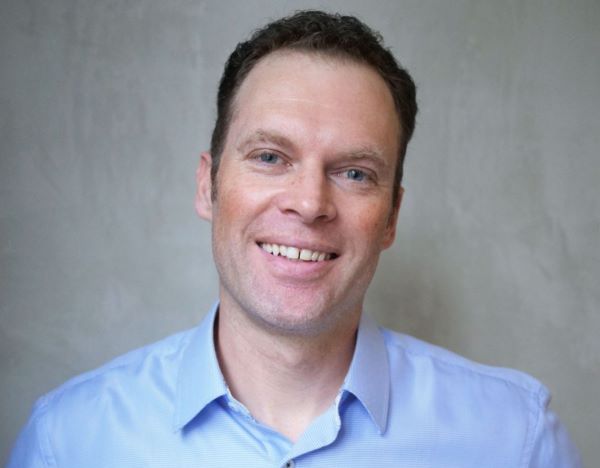
By Vince Chong
SMU Office of Research – People take a bigger interest in climate change when they feel personally vested in the issue, a Singapore Management University sustainability communication expert notes in his latest research.
And the way they get there appears closely tied to traditional audiovisual communication such as television, movies, radio. This is because such media appears to best affect perceived experience, perceived risk and knowledge, all of which in turn may lead individuals to engage with climate change information.
Associate Professor of Sustainability Communication Sonny Rosenthal’s research paper Media Use: Interpersonal communication, and personal relevance as external and internal representations of climate change – co-authored by Nanyang Technological University doctoral candidate Ai Pengya – is also slated to appear in the prestigious Climatic Change journal, which further affirms its detailed investigations.
Its findings go beyond the obvious observation that audiovisual media influences perception. For one, Professor Rosenthal tells the Office of Research, consumers of traditional audiovisual media no longer come away with an exaggerated sense of climate change that audiences in older studies, such as those that watched the 2004 disaster movie The Day After Tomorrow, did.
“There was a psychological distance then between most individuals and climate change in terms of time, place, and people. An old way of thinking was that ‘climate change is either not going to happen or if it does, it won’t happen to me’,” says the academic, who joined SMU in July.
“Now, research over the past two decades shows that it has gotten more personally relevant to people. Climate change is affecting audiences personally and this is partly a function of how it’s been discussed in the media, as an objective portrayal of events rather than entertainment that exaggerates.”
Essentially, the paper explores how individuals interact with external representation, in this case different forms of media, to interpret climate change information, and how this affects internal representation comprising personal experience, knowledge, perceived risk, and personal relevance.
It is based on online survey data, polled between April 7 and May 9, 2022, from thousands of samples in Singapore and the United States. They reflect a mean age of 41.2 years and 44.6 years, respectively, as well as a roughly equal gender distribution between men and women.
Evolution
As a form of external representation, media sources have covered climate change since the 1950s, notes Media Use. Over the years this coverage has grown on the internet and in new media, such as social media, and what this means is that diverse information channels have led to greater interpersonal communication that affects internal representation on a deeper level.
“The evolution of the media has blurred the lines between mass and interpersonal communication,” the authors write in the paper.
They go on to cite previous research, with “[t]he term masspersonal reflect[ing] this blurring, describing social media as having characteristics of mass media with large audiences and interpersonal communication between individuals.”
Personal relevance has not risen simply because of an explosion of media sources such as social media, Professor Rosenthal says. Rather, it has enabled information to be presented in a different way that facilitates more immediate discussion about climate change. This, he notes, was not historically available; back then one would have to write a letter to the editor publishing such information to get a conversation going.
“We were always already saturated with information; there’s always been more books than anyone can read in a lifetime,” the academic tells Office of Research.
“In the case of climate change, we’ve been talking about it but the general direction hasn’t really changed. What has changed is the degree of confidence, scientists are more confident that climate change is happening, because there are more tools, more research, and these facts are getting out there. You can’t argue with facts.”
On the flip side, the research notes, citing prior studies, despite “all the potential strengths” of myriad information sources for people to engage with climate change, the “expanding sea of information is full of noise.” This may manifest itself in the spreading of “low-quality information,” “knowledge gaps” for those with less access to media sources, and misinformation or misdirection.
Professor Rosenthal adds also that social media algorithms do not help when they group together individuals with shared perspectives, and turn it into an echo chamber. This means climate change deniers, for example, are likely to view repeated content that holds self-affirming untruths.
“I think the danger needs to be understood in the context of where audiences reside,” he says. For example, lies about climate change would not be as problematic in Singapore than the US, he adds, partly as Singapore laws do not permit outright industrial lobbying by, say, oil or mining interest groups.
The real danger, the academic notes, turns more on private interest than actual belief that climate change is not real, when, for instance, companies prioritise maximising profits and shareholder dividends over the environment.
He cites an example of a documentary about an oil lobbyist embedding himself in a local community that was considering setting up a wind farm, and drumming up local opposition by claiming without real evidence that the project would take jobs and kill birds. Incidentally, Professor Rosenthal notes, this documentary itself would be itself an external representation that affects people who watch it.
More immersive
Ultimately, as the research shows, audiovisual media causes more of an effect to internal representation than its textual counterpart. This, Professor Rosenthal notes, is an effect “that would generalise” across communities, not just in Singapore or the US.
“If photos are worth a thousand words, then videos are worth a thousand photos,” he says.
“What we expect to see is that the richer audiovisual experiences are, the more it will lead to perceived experience and that will lead to personal relevance.”
Not surprisingly, Professor Rosenthal’s next projects include immersive virtual reality (VR) experiences that seek to increase personal relevance towards climate change. One of these proposes to create a virtual city where the participant can experience different futures with respect to rising sea levels.
“VR represents a novel opportunity to increase awareness about climate change through an immersive audiovisual experience,” he says.
“The more we experience potential risk, the more we feel it.”
Back to Research@SMU November 2024 Issue
See More News
Want to see more of SMU Research?
Sign up for Research@SMU e-newslettter to know more about our research and research-related events!
If you would like to remove yourself from all our mailing list, please visit https://eservices.smu.edu.sg/internet/DNC/Default.aspx

